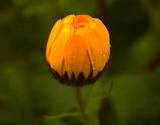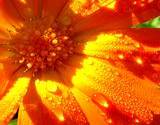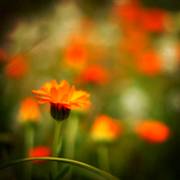|
Edible Flower Calendula
|
 |  |  |
Explore Grandma's Favorite Edible Flower Recipes for Calendula biscuits.
 The edible flower calendula is also known as pot marigold, this annual was a favorite in medieval cooking pots. Calendula (Calendula officinalis) grows up to 20 inches tall, with attractive pale yellow to deep orange flowers. Sow seeds in a sunny spot in well-drained soil or can also be grown in pots. Provide afternoon shade in hot temperatures. In colder climates, start indoors. This easy-to-grow plant self-sows freely.
The edible flower calendula is also known as pot marigold, this annual was a favorite in medieval cooking pots. Calendula (Calendula officinalis) grows up to 20 inches tall, with attractive pale yellow to deep orange flowers. Sow seeds in a sunny spot in well-drained soil or can also be grown in pots. Provide afternoon shade in hot temperatures. In colder climates, start indoors. This easy-to-grow plant self-sows freely.
Use caution if you have allergies to ragweed, asters, and other members of the Compositae family.
It's been reported that people sensitive to these known allergy agents can experience symtoms like watery eyes, sneezing and even a mild case of asthma.
Many Varieties and Uses of Marigolds
 The marigold flower has many different varieties. The flower itself seems insignificant in a garden, mostly because it's such a hardy plant. It needs very little maintenance, special fertilizer or a specific area of the garden to grow. My favorite areas to grow marigolds have always been between my vegetable plants to repel insects.
The marigold flower has many different varieties. The flower itself seems insignificant in a garden, mostly because it's such a hardy plant. It needs very little maintenance, special fertilizer or a specific area of the garden to grow. My favorite areas to grow marigolds have always been between my vegetable plants to repel insects.
Marigolds have never been popular because of their fragrance. Drying marigolds is very easy and can be used in dry flower arrangements. The edible flowers like calendula is mainly popular for the bright yellow or orange color it adds to dishes. Many people enjoy the slight bitter taste. Personally I believe it's an acquired taste passed down through family recipes that can date back as far as the medieval era.
DISCLAIMER:
The statements made here have not been approved by the Food and Drug Administration. These statements are not intended to diagnose, treat or cure or prevent any disease. This notice is required by the Federal Food, Drug and Cosmetic Act.
Return from Edible Flower Calendula to Grandma's Edible Flowers
Return to Grandma's Wisdom Home





